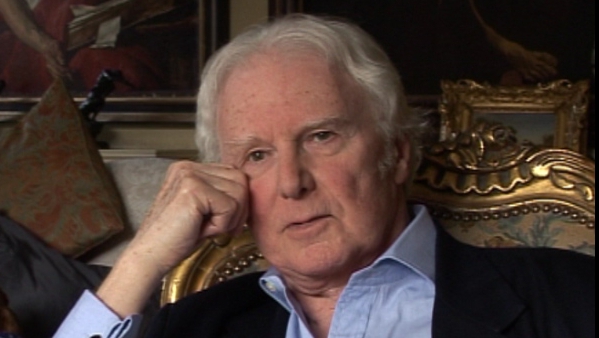NEXT STORY

How The Courtauld grew in prestige under Anthony Blunt
RELATED STORIES

NEXT STORY

How The Courtauld grew in prestige under Anthony Blunt
RELATED STORIES


|
Views | Duration | |
|---|---|---|---|
| 51. Titian's Assumption of the Virgin | 286 | 02:22 | |
| 52. Modern transport robs the traveller of the joy of discovery | 204 | 04:14 | |
| 53. Anthony Blunt and Johannes Wilde | 273 | 06:00 | |
| 54. How The Courtauld grew in prestige under Anthony Blunt | 250 | 04:58 | |
| 55. Notable alumni of The Courtauld | 225 | 01:13 | |
| 56. Working to fund my PhD | 201 | 04:42 | |
| 57. Too late to return to academia | 197 | 04:42 | |
| 58. Potential pitfalls in preparing an exhibition | 176 | 02:37 | |
| 59. Lost in translation: how not to compile a catalogue | 188 | 01:50 | |
| 60. Temperamental differences and a damaged Delacroix | 188 | 05:55 |


In my first incarnation at The Courtauld, I didn’t see anything much of Anthony Blunt. In the second, I saw a great deal of him. I was specialising in the 17th century, and quite a lot of the 17th century means dealing with people like Claude and Poussin and with French architecture, Mansart with his particular enthusiasm.
And he taught with such clarity. There were the two… the two great men there were Johannes Wilde and Anthony. And they both had a capacity for distilling all the available knowledge and producing it. And you’d come away with... from Johannes, with an absolutely clear picture of the development of Rembrandt or Rubens or Michelangelo. You would… you didn’t know everything, but you knew everything that was important to know, of immediate value. And Anthony was, to some extent, the same. The material was distilled, but it wasn’t the final distillation. It was never the final distillation. There was always something more to be discovered, to be identified, to affect. And it might be something which had nothing to do with the subject, but which was philosophical or scientific or mathematical or something, but then, because that was happening over there in that discipline, it was having an effect on the discipline of art history. And so you could, even as a student, have an idea about something, which had not been published by anybody else. And you could produce it at a tutorial, or in the middle of reading an essay or whatever. And I remember once having an idea about Mansart, the interpretation of one of his town square designs. And he said, 'My God, I think you’re right'. And he sprang from his chair and went over at the other end of the room, hauling 17th century books of ground plans and elevations and so on off the shelves. And the only place to put them was on the floor. And so he was on the floor, I was on the floor, the other students were on the floor. We were all turning pages and, sort of, trying to prove a point. And he said, 'You’re absolutely right, you must publish this. Sort of knock some sort of sense into it, and I’ll see that it gets into the Burlington magazine'. And that was a mark of his generosity and his honesty, because I know an awful lot of academics who would simply have swallowed that idea and then regurgitated it a year or two later as their own, but never Anthony. He was always, always trying to push students into being their own man, as it were. And so he was… well, they were both inspiring, in their way. Their ways were different, and I’m very glad I had that sort of experience.
[Q] And were you close friends with both of them, as well as a pupil, or…?
You couldn’t be a close friend of Johannes. Johannes was so eminent. And Johannes had friends of his own generation. And, you know, you were dealing with a man who is 50 years older than you. You don’t make friends. You venerate, you adore, you respect. And you love, in a funny kind of way. You love in a way that is entirely giving, because he is so good and so great.
Anthony, there was no friendship while he was my tutor. The friendship developed very quickly after I’d graduated. For Anthony to have been a friend of a student would, I think, have made things difficult and led to all sorts of insinuations. But once I’d graduated, once I was free of being a student, then we kind of got on very well and very warmly.
Born in England, Brian Sewell (1931-2015) was considered to be one of Britain’s most prominent and outspoken art critics. He was educated at the Courtauld Institute of Art and subsequently became an art critic for the London Evening Standard; he received numerous awards for his work in journalism. Sewell also presented several television documentaries, including an arts travelogue called The Naked Pilgrim in 2003. He talked candidly about the prejudice he endured because of his sexuality.
Title: Anthony Blunt and Johannes Wilde
Listeners: Christopher Sykes
Christopher Sykes is an independent documentary producer who has made a number of films about science and scientists for BBC TV, Channel Four, and PBS.
Tags: The Courtauld Institute of Art, Anthony Blunt, Johannes Wilde, Anthony Frederick Blunt, Claude Lorrain, Nicolas Poussin, François Mansart, Rembrandt Harmenszoon van Rijn, Sir Peter Paul Rubens, Michelangelo di Lodovico Buonarroti Simoni, Michelangelo
Duration: 6 minutes
Date story recorded: April 2013
Date story went live: 04 July 2013